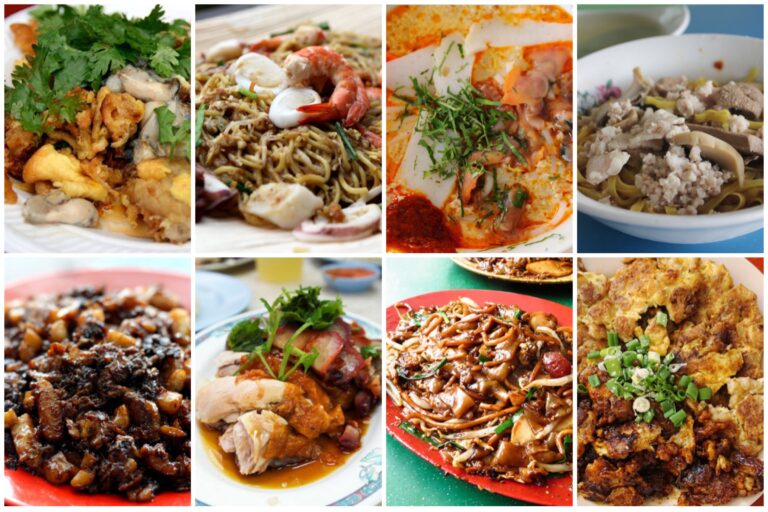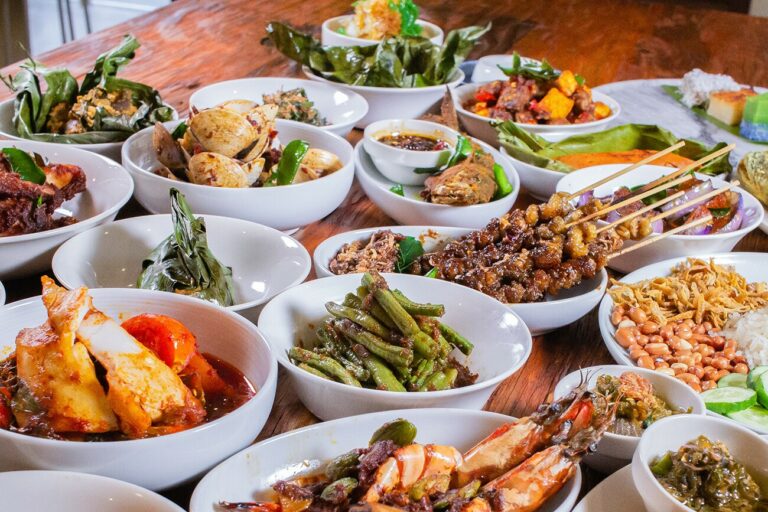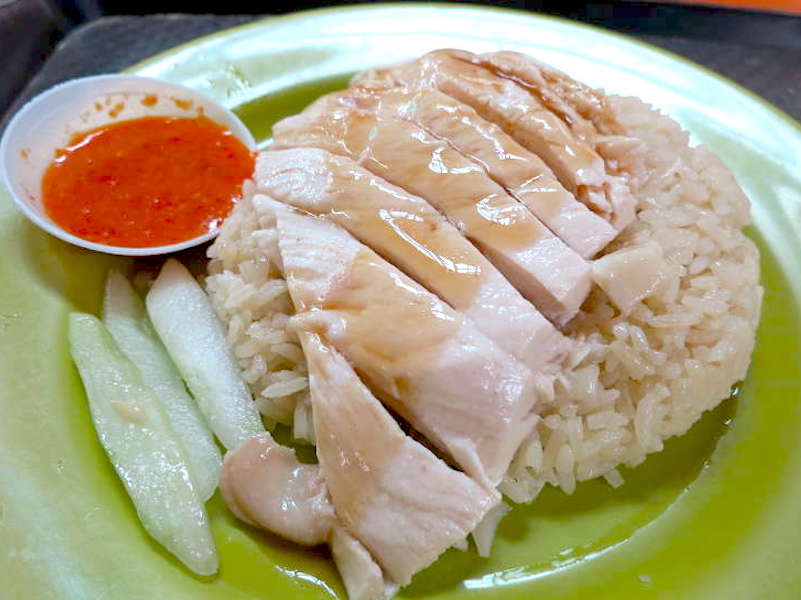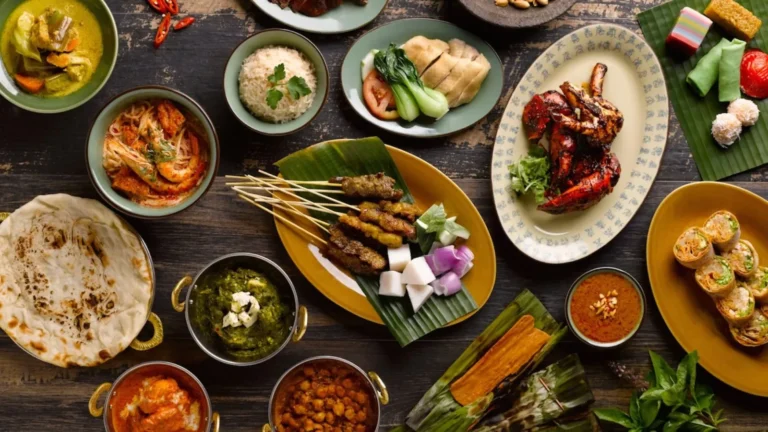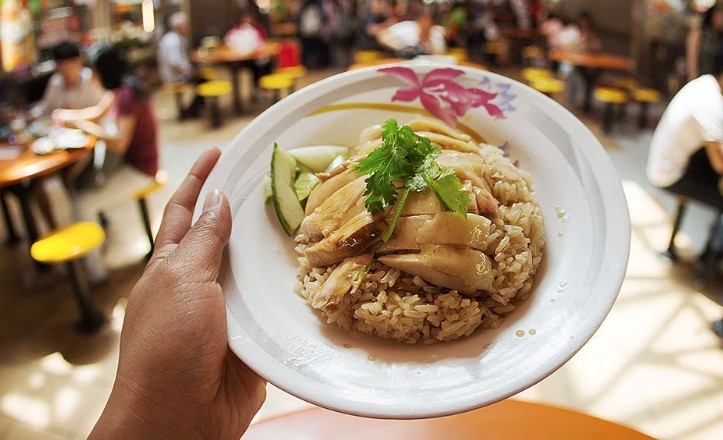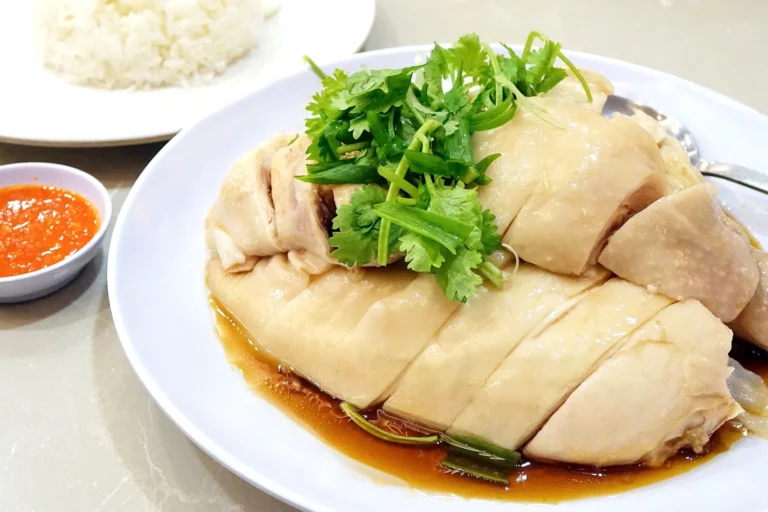Introduction: Singapore’s Street Food Scene
Singapore’s street food scene is a vibrant and integral aspect of the country’s culture. From bustling hawker centers to roadside stalls, there is an abundance of delicious and affordable food that can be found throughout the city-state. Singaporean street food is renowned for its diverse flavors, which are influenced by the country’s multicultural food heritage.
Hainanese Chicken Rice: A Signature Dish
Hainanese chicken rice is a quintessential Singaporean dish that can be found at nearly every hawker center and food court in the country. The dish consists of succulent poached chicken that is served with fragrant rice cooked in chicken broth and a dipping sauce made from ginger, garlic, and chili. The dish is beloved for its simplicity and comforting flavor.
Char Kway Teow: A Stir-Fried Delight
Char kway teow is a popular stir-fried noodle dish that is made with flat rice noodles, shrimp, Chinese sausage, and bean sprouts. The dish is cooked in a hot wok with dark soy sauce, chili, and garlic, giving it a smoky and savory flavor. Char kway teow is a comforting and hearty dish that can be found at many hawker centers and street food stalls throughout Singapore.
Laksa: A Spicy Noodle Soup
Laksa is a spicy noodle soup that is a fusion of Chinese and Malay flavors. The dish is made with a rich and fragrant broth that is infused with a blend of spices, coconut milk, and shrimp paste. The soup is then served with rice noodles, shrimp, fish cakes, and bean sprouts. Laksa is a staple dish in Singaporean cuisine and is a must-try for visitors to the country.
Satay: A Grilled Skewer of Flavor
Satay is a popular street food in Singapore that consists of marinated meat (usually chicken or beef) that is skewered and grilled over an open flame. The meat is then served with a peanut dipping sauce and cucumber chunks. Satay is a flavorful and aromatic dish that is perfect for a quick and satisfying meal on-the-go.
Roti Prata: A Flaky Indian Flatbread
Roti prata is a flaky Indian flatbread that is a popular street food in Singapore. The dish is made with dough that is stretched thin and then folded repeatedly to create layers. The dough is then cooked on a hot griddle until crispy and golden brown. Roti prata is often served with a curry dipping sauce or sugar for a sweet twist. It is a popular breakfast food in Singapore and can be found at many hawker centers and street food stalls.
In conclusion, Singaporean street food is a delicious and diverse reflection of the country’s multicultural food heritage. From signature dishes like Hainanese chicken rice to spicy noodle soups like laksa, there is something for everyone to enjoy. Visitors to Singapore should definitely make an effort to try some of these iconic street food dishes as they are an essential part of the country’s culinary identity.

